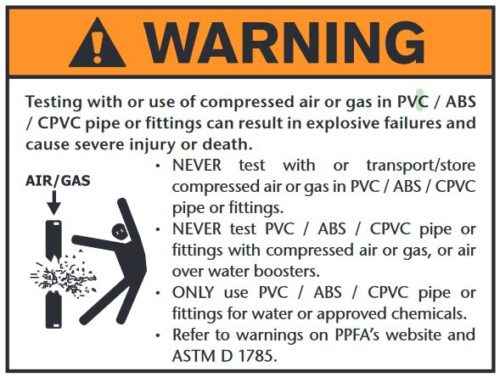Types of Pipes and Fittings for Compressed Air Systems
Pipes and fittings are components that connect everything in a compressed air system. Piping has the potential to make or break any enterprise that uses compressed air systems in its day-to-day operations.
Because faulty and inefficient piping can result in lost power, it is important to pay attention to the layout, installation, and maintenance of pipes and fittings of compressed air systems. Factors that impact pressure efficiency include obstructions and blockage, moisture, and sharp angles. Undersized piping is one of the biggest problems when delivering the air to the application.
Pipes and fittings are integral to the compressor system running efficiently and properly. If the quality of these components is poor, they can cause leaks and other issues.
Two Basic Types of Pipes for Compressed Air Systems
The two basic materials used in pipes for compressed air systems include:
- Plastic
- Metal
Plastic Pipes
Plastic pipes don’t corrode. As a result, there is a minimum risk of rust and a lower risk of obstructions. The interior surface of the pipe is smooth, which encourages laminar flow. Ideal plastic pipes for piping compressed air are made of acrylonitrile butadiene styrene (ABS). Polyethylene (PE) piping and high-density polyethylene (HDPE) piping are also good choices for compressed air applications. PVC is not recommended and is an OSHA violation if used. It degrades and can burst, causing damage and is very dangerous to employees exposed to it.

Metal Pipes
Metal pipes are the preferred choice for compressed air systems.
- Black Steel Pipe
Black steel is commonly used in compressed air systems. The material is strong and durable, but time-consuming in labor. It is heavy but susceptible to corrosion. The threaded connections can also slip and leak.
- Galvanized Steel Pipe
Galvanized steel is widely used in compressor systems. It is less susceptible to corrosion. The galvanized coating can flake off and cause blockages in air stream applications.
- Copper Pipe
Copper pipes are corrosion-free and easy to cut and weld. They can be pressed together with special fittings and tools. They are lightweight and have a wide range of fittings available for compressed air systems. They also have a very smooth interior for a solid laminar flow.
- Aluminum Pipe
Aluminum pipes have anti-corrosive properties. It is lightweight, which makes it easy to carry around and install. The fittings are easy to put together.
- Stainless Steel Pipe
A stainless-steel pipe can be welded and pressed easily. The interiors and exteriors have no risk of degradation and corrosion. Stainless steel is heavy and this can make it difficult to fit. The high cost of this material makes it less common in compressed air applications, but it has numerous benefits.
Fittings in Compressed Air Systems
Fittings (push-in) are an ideal choice for connecting and disconnecting lines without the use of tools. Our vast selection of fittings includes:
- Bulkhead unions
- Male elbows
- Male swivel elbows
- Male connectors
- Female elbows
- Female connectors
- Unions
These fittings are available in nickel-plated brass, steel, and nylon plated brass. The ability to quickly connect them can save substantial time during assembly. The fittings are reusable, which enables you to connect and disconnect again and again. These components can help keep a compressed air system running as smoothly as possible.
Learn More About Pipes for Compressed Air Systems
Compressed Air Systems provides high quality compressed air pipes, pneumatic fittings, and compressed air parts and fittings to keep the compressed air system operating efficiently. Contact us to receive more information about different types of compressed air pipes and fittings.








